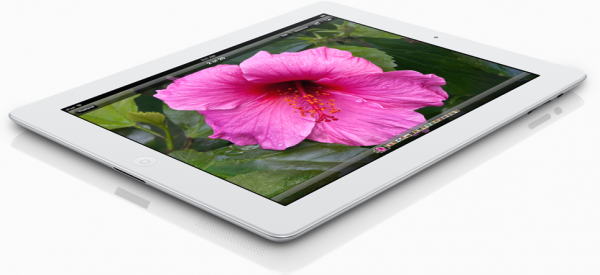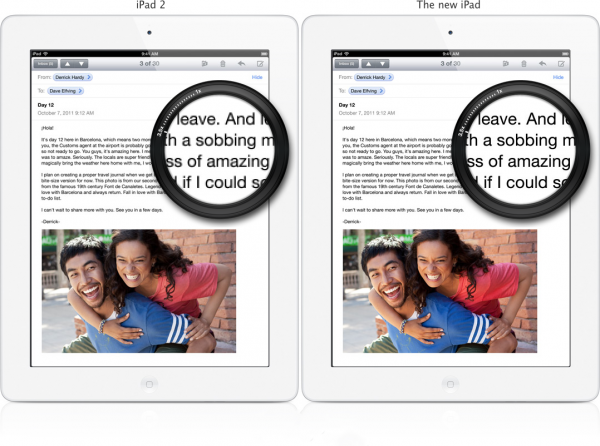Without a doubt, the Retina display was the main novelty (at least commercially speaking) of the new iPad after all, the 4G s 4G even in the United States and Canada. It has a resolution of 2048 × 1536 pixels (twice that of the iPad 2), placing 3.1 million pixels in 9.7 inches, a work worthy of applause, a feat previously doubted by many.
It is not easy to explain how Apple managed to do this, technically speaking, however, DisplaySearch experts have elucidated things a little for mere mortals who, like me, did not graduate exactly and did not do so well with numbers.

For the beginning of the conversation, the task for Apple's suppliers (Samsung, Sharp and LG Display) was complicated. Apparently, many tests have been carried out, and the 264ppi really seem to be the limit supported by the screens. Sharp's IGZO display story seems to be true, however the technology has not passed Apple's tests. Even communicating on the gadget's specifications page that it uses an IPS screen (In-Plane Switching), it is believed that some of the suppliers also work with FFS technology (Fringe Field Switching).

To illuminate this new screen, it was necessary to double the number of LEDs in those two bars that we have already mentioned. Thus, the new iPad has 72, greatly increasing the consumption of the gadget. Fortunately, the battery also brought significant advances, which allowed for the implementation of new features.
The Retina display also has a pixel design called SHA (Super High Aperture), allowing Apple to place four more pixels where we previously had just one, avoiding interference or a drop in image quality.

Watch this video from Apple to understand how it built its Retina Display.
The interesting thing about this, again, is that Apple was not the first to use the technology. However, it is very likely that it will be responsible for disseminating it in the market.
Some might say that the new iPad's screen on the Retina, since on the iPhone the pixel density of 326ppi, while on the 264ppi tablet in theory, the human eye would fail to recognize the pixels at 300ppi. Only many forget that, on the iPad, the distance of use is much higher than the smartphone. So, we don't need to have the absurd density found on the iPhone.
And, before anyone complains, Retina display is nothing more than a trade name given by Apple, to inform you that the display is absurdly good and that, once tried, you will no longer be able to use any gadget other than Retina.
It remains to be seen whether, with the difficulty of producing such a display, Apple is able to supply any demand, do you doubt that the new iPad will be a #epicFAIL best seller?
(via AppleInsider)
